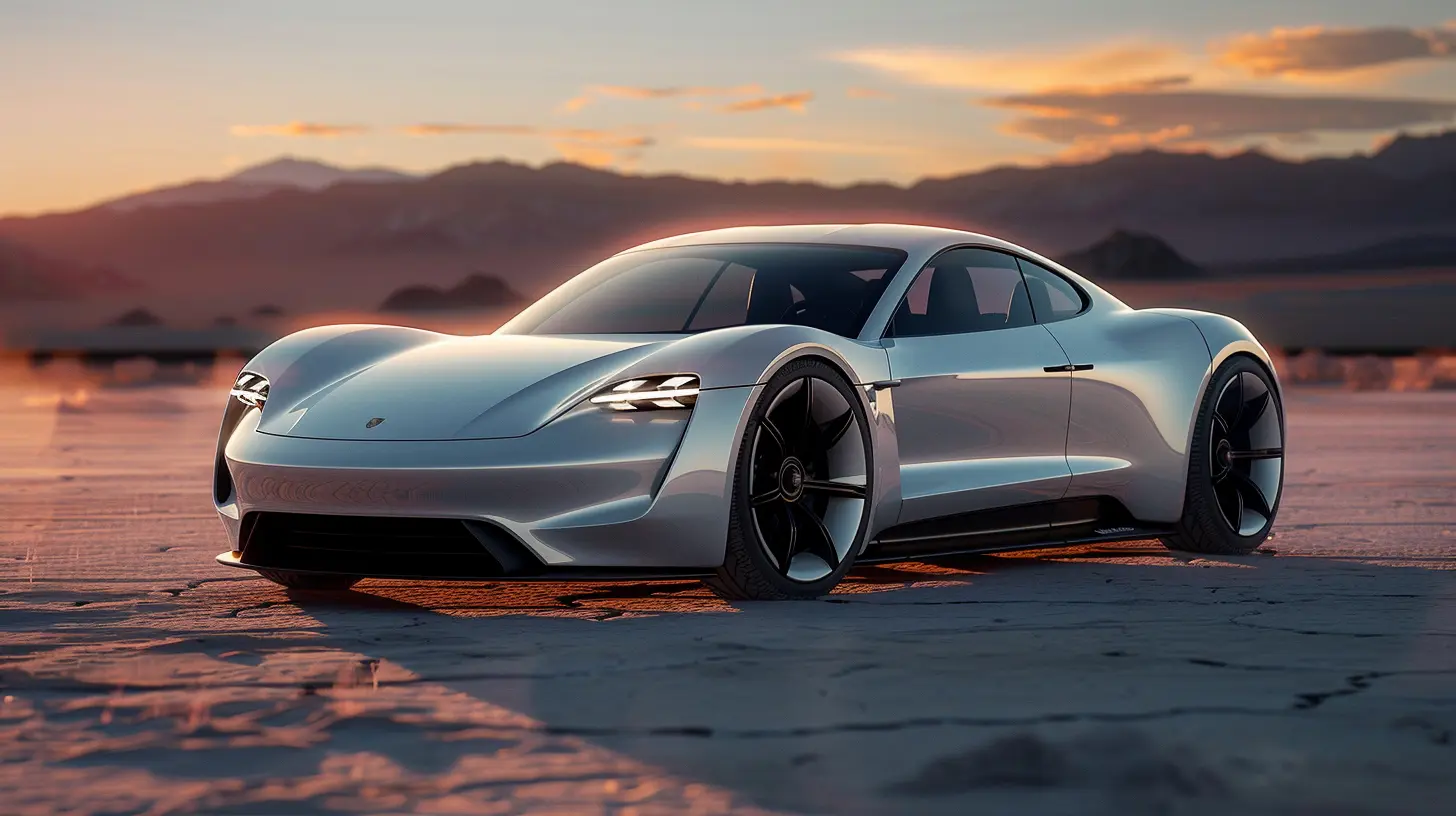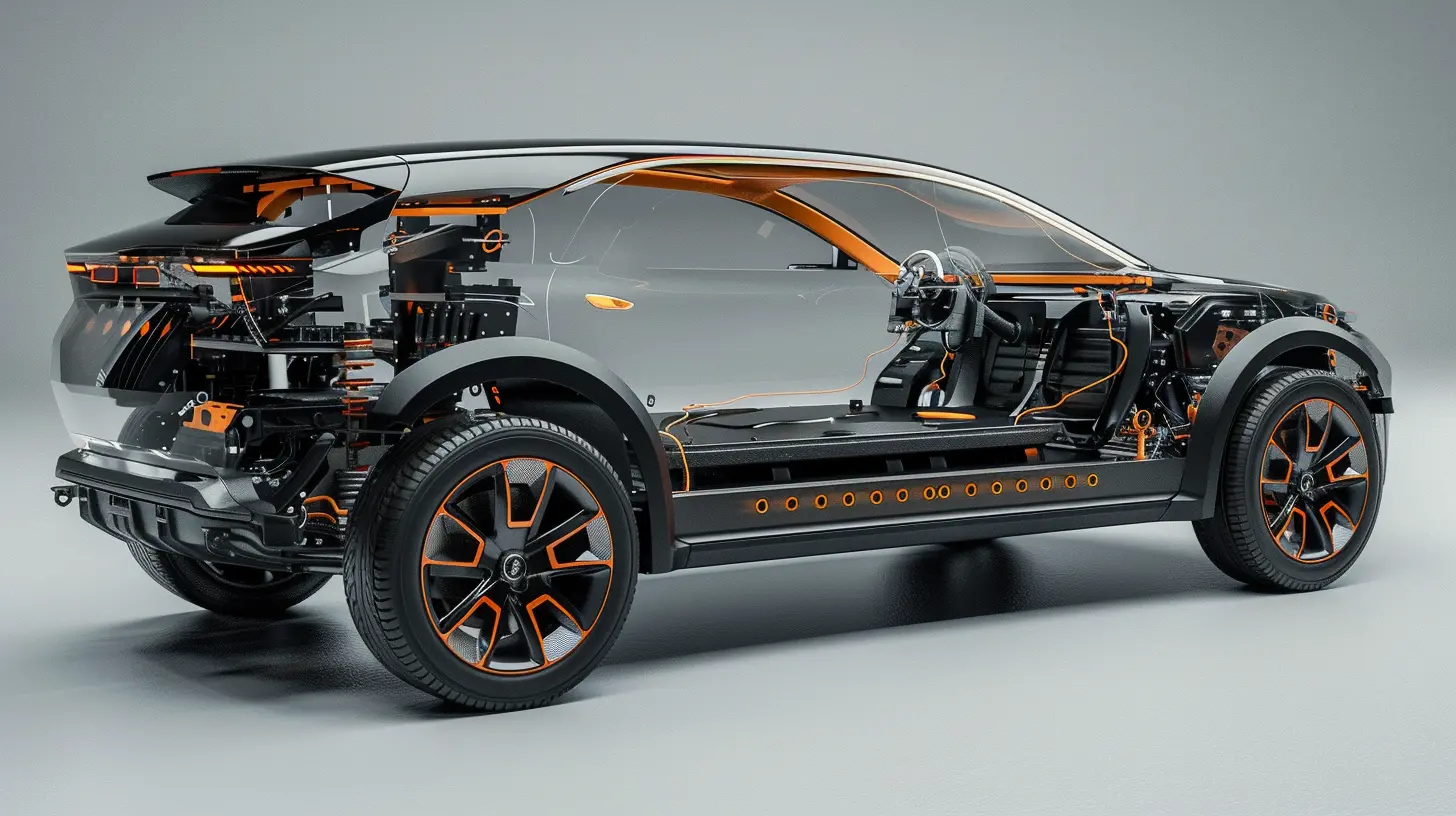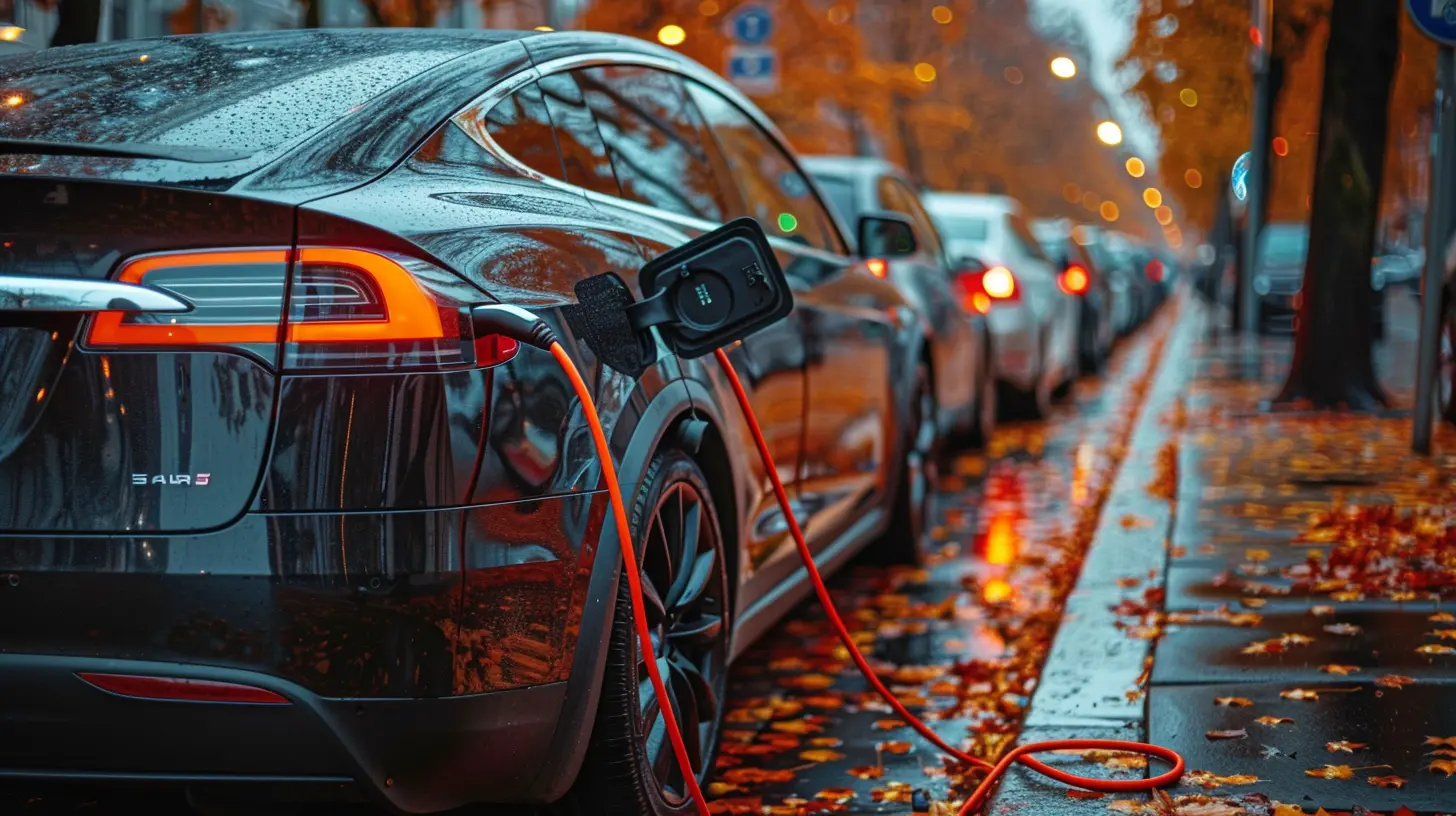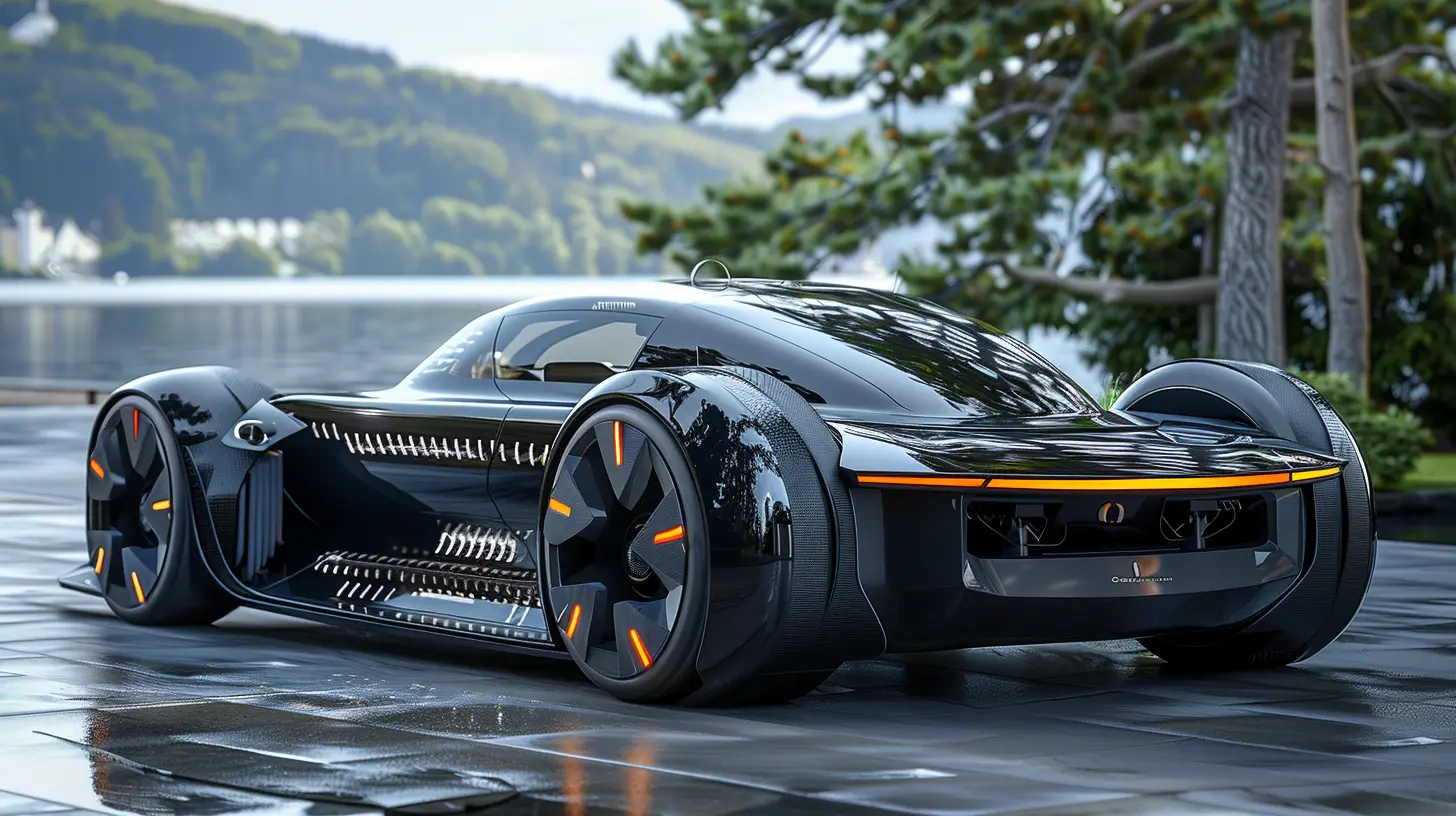The Evolution of Electric Vehicles: Beyond Batteries
6 December 2024
Electric vehicles (EVs) have come a long way since their inception. What started as a niche market for environmentally conscious drivers has rapidly evolved into a mainstream automotive revolution. But here’s the thing—it's not just about batteries anymore. Sure, when we talk about EVs, the conversation often centers around battery range, charging speeds, and energy efficiency. Yet, the evolution of electric vehicles involves much more than just what powers them.
In this article, we’ll explore how electric vehicles are evolving beyond batteries, touching on innovations in design, power generation, charging infrastructure, and even the materials used in their construction. So, buckle up—this journey is about to take some fascinating turns.

A Brief History of Electric Vehicles
Before we dive into the future, let’s take a quick pit stop in the past. Believe it or not, electric vehicles have been around since the 19th century. In fact, the first practical electric car was built in the 1830s. For a while, electric cars were even more popular than their gasoline-powered counterparts. But as combustion engines became cheaper and more efficient, EVs slowly faded into the background.It wasn’t until the late 20th century that EVs made a comeback, thanks to growing environmental concerns and advancements in battery technology. Fast forward to today, and we’re seeing electric cars from almost every major automaker, with some even planning to phase out gas-powered cars entirely in the near future.

Batteries: The Early Obsession
Let’s be real—batteries have been the focal point of EV development over the last few decades. And for good reason! The performance of an electric car has largely depended on the capacity, range, and efficiency of its batteries. Lithium-ion batteries, in particular, have played a key role in making EVs more viable for everyday use.Remember when the biggest concern about owning an EV was range anxiety? Well, thanks to significant improvements in battery technology, modern electric cars can now travel hundreds of miles on a single charge. But while batteries have undeniably been the star of the show, they’re not the only player in the game anymore.

Going Beyond Batteries: What’s Next?
1. Regenerative Braking: Turning Energy Loss into Gains
Ever heard of regenerative braking? If you haven’t, you’re missing out on one of the coolest aspects of EV technology. In a traditional gasoline car, braking simply wastes kinetic energy as heat. But in an electric vehicle, regenerative braking can capture some of that lost energy and feed it back into the battery.It's like getting a mini-recharge every time you hit the brakes. Over time, this can add up, increasing the overall efficiency of the vehicle and extending its range without needing any additional batteries.
2. Solar-Powered Cars: Harvesting the Sun
Imagine driving a car that charges itself as you cruise down the highway. Sounds like something out of a sci-fi movie, right? Well, it's closer to reality than you think. Solar panels are increasingly being integrated into the design of electric vehicles, allowing them to harness energy from the sun while on the move.While we’re not quite at the point where solar panels can fully power a car, they can certainly help extend the range or power auxiliary systems. Some manufacturers are even exploring the idea of solar-powered paint that can generate electricity for the vehicle. Talk about futuristic!
3. Wireless Charging: Cutting the Cord
Plugging in your car to charge it might soon be a thing of the past. Wireless charging technology, similar to how you might charge your smartphone, is making its way into the EV world. The idea is simple: instead of having to physically connect your car to a charger, you could park it over a wireless charging pad, and voila! The car charges itself through electromagnetic induction.This could revolutionize the way we think about charging infrastructure, making public charging stations more convenient and less cluttered. Plus, it opens up the possibility of dynamic charging—where your car could charge while driving over specially equipped roads. Imagine never having to stop for a charge again!
4. Solid-State Batteries: The Next Big Leap?
While we’re moving beyond a singular focus on batteries, it’s impossible to ignore a potential game-changer on the horizon: solid-state batteries. Unlike traditional lithium-ion batteries that use liquid electrolytes, solid-state batteries use a solid material, making them safer, lighter, and capable of storing more energy.What does this mean for electric vehicles? Well, it could mean faster charging times, longer ranges, and even cheaper production costs. While solid-state batteries are still in the development phase, many experts believe they could be the key to unlocking the next generation of EVs.
5. Hydrogen Fuel Cells: A Different Kind of Electric
When we think of electric vehicles, we usually think of battery-powered cars. But there’s another type of EV that runs on hydrogen fuel cells. These vehicles generate electricity by combining hydrogen with oxygen in a chemical reaction, with water vapor being the only emission.The advantage? Hydrogen fuel cells can offer a longer range and faster refueling times compared to battery-electric vehicles. The downside? Hydrogen infrastructure is still in its infancy, and producing hydrogen in an environmentally friendly way remains a challenge. However, as the technology matures, fuel-cell vehicles could become a key player in the EV landscape.

The Role of AI and Autonomous Driving
The evolution of EVs isn’t just about how they’re powered—it’s also about how they’re driven. Enter artificial intelligence and autonomous driving. Many electric vehicles today are equipped with advanced driver-assistance systems (ADAS) that use AI to help drivers with tasks like parking, lane-keeping, and accident avoidance.But that’s just the tip of the iceberg. Fully autonomous, self-driving electric vehicles are on the horizon, and they could change the way we think about transportation entirely. Imagine a world where you don’t even need to own a car—you could simply hail an autonomous electric vehicle to take you wherever you need to go. No more worrying about fuel, maintenance, or even driving!
The Future of Charging: From Fast to Ultra-Fast
Charging infrastructure is another area undergoing rapid evolution. In the early days of EVs, charging was a time-consuming process, often taking several hours. But thanks to advancements in fast-charging technology, you can now charge most electric cars from 0 to 80% in under 30 minutes. That’s pretty amazing, but it’s about to get even better.Ultra-fast charging stations are beginning to pop up, capable of delivering over 350 kW of power. For context, that’s enough to add hundreds of miles of range in just 10-15 minutes. As this technology becomes more widespread, charging an electric vehicle will become almost as quick as filling up a gas tank.
Sustainable Materials: Greener Cars Inside and Out
It’s not just about how electric vehicles are powered—they’re also becoming more sustainable in the materials used to build them. Automakers are increasingly turning to recycled, renewable, and biodegradable materials to reduce the environmental impact of car production.For example, some manufacturers are using recycled plastics, natural fibers, and even ocean waste to create car interiors. Others are experimenting with vegan leather alternatives and sustainable fabrics. The goal is to make the entire lifecycle of the vehicle—from production to disposal—greener and more sustainable.
The Integration of Smart Grids: Powering the Future
Another exciting development is the integration of electric vehicles with smart grids. EVs are no longer just consumers of electricity—they can also become part of the energy ecosystem. Vehicle-to-grid (V2G) technology allows electric cars to feed energy back into the grid during peak demand times, helping to stabilize the energy supply.This could be a game-changer for renewable energy. For instance, if you have solar panels on your house, your electric vehicle could store excess energy during the day and then feed it back into the grid when needed. It’s like turning your car into a rolling power plant!
Conclusion: A Future Beyond Batteries
The evolution of electric vehicles is about so much more than just improving battery technology. From regenerative braking and solar panels to wireless charging, AI, and sustainable materials, the world of EVs is expanding in ways we couldn’t have imagined just a few years ago.As these technologies continue to evolve, electric vehicles will become not only a cleaner alternative to gas-powered cars but also smarter, more efficient, and more integrated into the broader energy ecosystem.
The future of transportation is electric, and it’s clear that we’re only scratching the surface of what’s possible. So, while batteries will continue to play a significant role in the evolution of EVs, the next frontier is about innovation beyond the battery.
all images in this post were generated using AI tools
Category:
Tech InnovationsAuthor:

Adeline Taylor
Discussion
rate this article
18 comments
Juniper Black
Exciting developments in EVs show promise beyond batteries; innovation is key to sustainability.
March 17, 2025 at 3:26 AM

Adeline Taylor
Thank you for your insightful comment! Indeed, exploring innovations beyond batteries is crucial for advancing EV sustainability.
Kestrel Thornton
Great insights! Excited to see the future of electric mobility unfold.
February 25, 2025 at 4:13 AM

Adeline Taylor
Thank you! I'm excited too—there's so much innovation ahead!
Valen Sawyer
Exciting insights! EV advancements extend far beyond just battery tech.
February 9, 2025 at 9:32 PM

Adeline Taylor
Thank you! Absolutely, the evolution of EVs encompasses innovative technologies like charging infrastructure, lightweight materials, and smart integration, shaping a sustainable future.
Alisha Taylor
The evolution of electric vehicles extends far beyond battery technology; innovations in materials, infrastructure, and software will redefine mobility, enhancing sustainability and user experience, ultimately reshaping our transportation future.
January 30, 2025 at 9:26 PM

Adeline Taylor
Absolutely! The evolution of electric vehicles indeed encompasses a holistic approach, integrating advancements in materials, infrastructure, and software to create a sustainable and user-friendly transportation landscape.
Tia Bowman
Great insights! Exploring alternatives to batteries is crucial for advancing electric vehicle technology and sustainability.
January 25, 2025 at 11:22 AM

Adeline Taylor
Thank you! I completely agree—exploring alternatives is key to unlocking the full potential of electric vehicles and enhancing sustainability.
April Anderson
This article beautifully highlights the transformative journey of electric vehicles. It's inspiring to see how innovation continues to push boundaries, paving the way for a cleaner, more sustainable future for all.
January 15, 2025 at 7:34 PM

Adeline Taylor
Thank you for your kind words! I'm glad you found the article inspiring and reflective of the exciting innovations in electric vehicles.
Anastasia Barker
From futuristic skateboards to electric jellybeans zipping down the street, the evolution of EVs is like a sci-fi movie written by a hamster on a caffeine buzz. Who knew sustainability could ride side-by-side with quirky innovations? Buckle up, the future is not just electric—it’s wildly imaginative!
January 5, 2025 at 1:11 PM

Adeline Taylor
Thank you for the whimsical perspective! It's exciting to explore how creativity and sustainability intersect in the evolution of electric vehicles. The future is indeed full of surprises!
Henry Cook
Electric vehicles are growing up—it's time to ditch the battery obsession and embrace the full spectrum of tech innovation. Buckle up, world!
December 30, 2024 at 5:53 AM

Adeline Taylor
Absolutely! Embracing diverse technologies will drive the future of electric vehicles and enhance sustainability. Exciting times ahead!
Soliel Wolf
While batteries stole the spotlight, the true evolution of electric vehicles extends far beyond. Innovations in materials, charging infrastructure, and AI-enhanced driving are redefining the landscape. As we shift gears, it's clear the future is electric, diverse, and undeniably exciting!
December 24, 2024 at 9:06 PM

Adeline Taylor
Thank you for highlighting the multifaceted advancements in electric vehicles! Indeed, the integration of innovative materials, robust charging infrastructure, and AI technology is crucial for shaping a dynamic and sustainable future in EVs.
Vanta Jenkins
Great insights on the future of electric vehicles! Excited to see innovations beyond traditional battery technology.
December 23, 2024 at 4:26 AM

Adeline Taylor
Thank you! I'm glad you found it insightful—exciting times are ahead for EV innovation!
Micah Snow
This article beautifully highlights the transformative journey of electric vehicles. As we explore innovations beyond batteries, it’s crucial to recognize the positive impact these advancements have on our environment and society, paving the way for a cleaner, sustainable future for all.
December 20, 2024 at 4:38 AM

Adeline Taylor
Thank you for your thoughtful comment! I appreciate your insight on the broader impact of electric vehicle innovations on our environment and society. Together, we can indeed drive toward a sustainable future!
Rivenheart Mendoza
This article sparks fascinating questions about the future of electric vehicles! Exploring alternatives to traditional batteries opens up a world of possibilities, from solar integration to innovative materials. I’m eager to see how these advancements will reshape the automotive landscape and influence sustainability efforts. Exciting times ahead for EV enthusiasts!
December 13, 2024 at 9:11 PM

Adeline Taylor
Thank you for your insightful comment! I completely agree—exploring alternatives to traditional batteries is key to shaping a sustainable future for electric vehicles. Exciting innovations lie ahead!
Hunter Barron
While batteries have been the spotlight, it's the innovative tech beneath that truly drives the evolution of electric vehicles. From ultra-efficient motors to smart grid integration, the future of EVs promises more than just range—it’s a revolution in mobility and sustainability.
December 12, 2024 at 4:33 AM

Adeline Taylor
Thank you for highlighting the importance of innovative technologies! Indeed, the advancements beyond batteries are crucial for shaping a sustainable and efficient future for electric vehicles.
Patience McGonagle
Exciting innovations are redefining electric vehicle capabilities today!
December 11, 2024 at 12:50 PM

Adeline Taylor
Absolutely! Innovations like solid-state batteries, wireless charging, and enhanced energy management are paving the way for the next generation of electric vehicles.
Kate Bowers
Exploring innovative technologies shaping the future of electric vehicles.
December 11, 2024 at 4:33 AM

Adeline Taylor
Thank you! It's an exciting time as we delve into advancements like solid-state batteries, alternative fuels, and enhanced charging infrastructure that are transforming the EV landscape.
Porter Miller
This article insightfully highlights the progression of electric vehicles beyond traditional batteries, showcasing innovations in charging infrastructure, sustainable materials, and advanced technologies that are shaping the future of eco-friendly transportation.
December 10, 2024 at 11:24 AM

Adeline Taylor
Thank you for your thoughtful comment! I'm glad you found the article insightful in showcasing the advancements shaping the future of electric vehicles.
Zayla McIntire
This article highlights the pivotal shift in electric vehicle technology, emphasizing advancements in materials, infrastructure, and energy management. As we move beyond traditional batteries, the future of EVs promises greater sustainability and efficiency, reshaping transportation.
December 8, 2024 at 7:45 PM

Adeline Taylor
Thank you for your insightful comment! I appreciate your recognition of the advancements in EV technology that are driving us toward a more sustainable future.
Carina Gilbert
As we journey beyond batteries, the next frontier in electric vehicles whispers of uncharted technologies and hidden potentials. What if the future lies not just in power, but in the very fabric of mobility itself? The mystery beckons.
December 8, 2024 at 3:42 AM

Adeline Taylor
Indeed, the future of electric vehicles is ripe for exploration. Emerging technologies hold exciting possibilities that could redefine mobility itself, moving beyond traditional power sources. The journey ahead is full of potential!
MORE POSTS

How to Adopt Agile Methodologies for Faster Software Delivery

Free vs Paid Content Creation Tools: What’s Worth the Investment?

Compact Keyboards for Minimalist Setups: Space-Saving Options

How 5G is Transforming Cloud Computing

How to Use Customer Data to Drive E-Commerce Innovation

Essential Content Creation Tools Every Creator Should Try

Understanding the Refresh Rate: Why it Matters for Monitors

What Happens to Your Data When You Delete an Online Account?

Premium Gaming Laptops with Stunning 4K Displays

The Role of Qubits in Quantum Computing Explained

Understanding Supervised vs. Unsupervised Learning: Key Differences